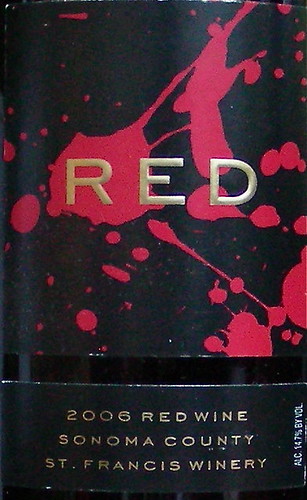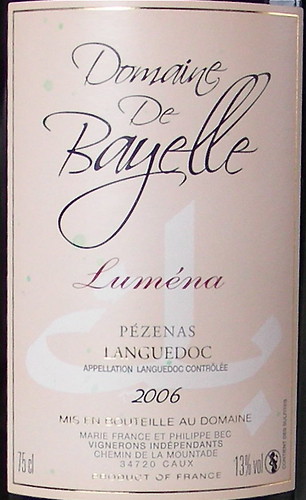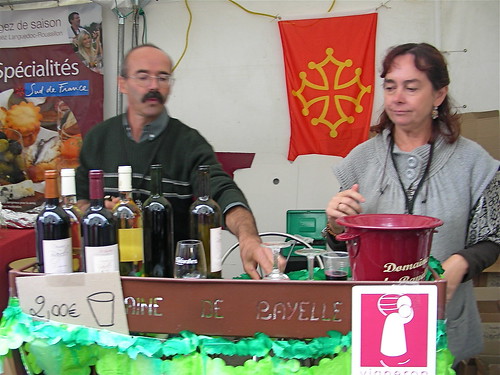 It's dark and cold outside and I have a bottle of wine that should warm me up: a 2006 St. Francis RED that was recently sent to me by Kobrand Corporation.
It's dark and cold outside and I have a bottle of wine that should warm me up: a 2006 St. Francis RED that was recently sent to me by Kobrand Corporation.The wine, made by St. Francis Winery, is a proprietary blend of 48% Merlot, 28% Cabernet Sauvignon, 15% Syrah, 3% Zinfandel and 6 % Mixed Blacks (Cabernet Franc, Grenache, Alicante, Malbec), from Sonoma County.
“RED is for all red wine lovers who simply want a tasty bottle of wine with a fun package at a great value. It's my job to worry about clones, soil conditions, vintage and Vinification” says St. Francis Winemaker Tom Mackey on the winery's website, “so that the consumer doesn't have to. We've created a dependable, versatile wine — No lessons needed &mdash uncork and enjoy.”
The St. Francis RED is made to be fun: if you buy the wine by the case, each bottle comes with a different red patterned label. If you buy only one bottle, you can pick and choose the label you like the best.
The wine has a deep color and a nose of spiced cherries and sweet berries. On the palate, it is full-bodied, fruity, juicy, slightly tannic with a peppery aftertaste. For a retail price around $10, it's a steal.
The RED website has also some hearty recipes that should go well with the wine. I noticed their Braised Short Ribs recipe that looks delicious and perfect for the season. Just make sure you have enough braising sauce to pour over your mashed potatoes!
Technorati tags: wine food & drink




